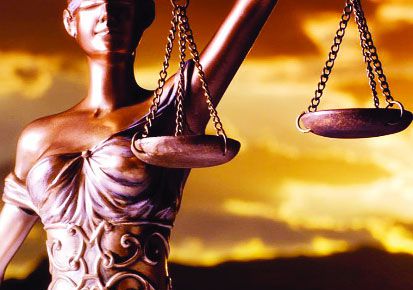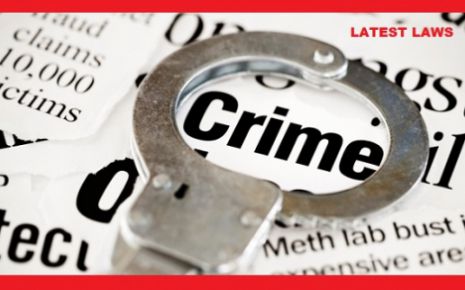Forensic Science In Criminal Investigation
Crime in some from or has existed since the beginning of human race. With
advancement in science and technology the concept of crime as well as the
methods adopted by criminals in its commission have undergone a phenomenal
change. On one hand the intelligent criminal has been quick to exploit science
for his criminal acts, on the other hand the police investigators no longer able
to rely on his age-old art of interrogation, development of sources and
surveillance to detect crime. The barbaric and torturous methods of detecting
crime have also no places in a civilized society
It is in this context, Forensic Science has found its existence. In these
circumstances, what can the police investigation turn to , except the developing
science? Its Development has provided a powerful tool in the law enforcement
Agencies and the judiciary.
Definition
Mathieu Orfila:
is generally recognized as the father of modern toxicology. In the early part of the 19th century he established in Paris, method for scientific chemical analysis of poisons which are in use even today.Francis Galton:
a scientist from U.K., undertook the first systematic study of fingerprints. He developed a methodology of classifying the Fingerprints for filing purposes)In 1892 , he published a book on “Fingerprints” giving a sound statistical proof of uniqueness of personal identification through fingerprintsKarl Landsteiner:
in 1901, discovered that blood could be grouped into different categories a Following this, in 1915. Dr. Leone Lattes of Italy devised a relatively simple procedure for determining the blood group of dried bloodstains and immediately adopted this technique for criminal Investigation.In the middle of the 19th century natural sciences began to develop rapidly. Justice, which for centuries was in search of objective and impartial evidence, as against, conventional oral testimony of unwilling, hostile and Unobservant, Witnesses, turned to science for assistance. At the same time Sir Arthur Conan Doyle popularized scientific crime detection methods through His fictional character Sherlock Holmes This certainly helped to publicist Amongst the scientists as well as criminal investigators the idea that science could aid in the detection and investigation of crime. Most of the pioneering work in the fields of forensic science originated from the continent of Europe, there are many who can be citied for their specific contribution in building the foundation of Forensic Science using method of natural and related sciences.
Key Components of Forensic Investigation:
- Crime Scene
- Preservation of the Crime Scene
- Recording of the Crime Scene
Crime Scene
A scene of occurrence of a crime is the place where a particular crime has been committed or where physical evidence of such crime is found when it is first brought to the notice of the police. It is a starting point for the investigator, which provides him with the information on the victim and the suspect, and to reconstruct the crime.The scene of occurrence cannot be limited to one place only. It may extend to one or more places. It may also not be limited to immediate surroundings, but may In a wider area depending upon the nature of the crime committed. In a compact scene of crime, such burglary, the scene may be divided into five parts, namely:
- Line of approach
- Point of entry;
- Actual scene;
- Point of exit; and
- Line of retreat.
The scene of crime may be classified as outdo or indoor scene. A crime committed on a road or a field is an outdoor crime. Whereas a crime committed in a house, a car, etc., is an indoor crime. There may be certain types of crime, which have no ‘scene’ at all. The crime of this nature are forgery, embezzlement etc.
The crime of indoor and outdoor nature like theft, house breaking, robbery, dacoit, homicide, rape, traffic accident, etc., have invariably physical evidence at their scenes because of intense physical activities involved in their commission. Physical evidence found at the crime scene can be the key to the solution of a crime.
Preservation of The Crime Scene
Preservation of the crime scene is most important task of the police. The first person arriving at the scene should. Be able to protect the scene from curious onlookers and family members. He should isolate the scene the crime by cordoning it off. Nothing on the scene should be touched, changed or altered until the investigating officer takes its proper note. Once any material object of dead body is moved from its place, it can never be restored to its original position That scene, once touched or altered, will make the task of an investigator, in reconstructing the crime and identifying the criminal by physical evidence, very difficult, it not impossible.Recording of Crime Scene
After taking an immediate action to protect the crime scene Investigator should then proceed to record the evidence. But before doing so, he should seek the help of two independent reliable witnesses, preferably from the neighbourhood of the crime scene, as their presence will strengthen the case of prosecution at the time of trial. No evidence should be picked up, or touched or even disturbed till it has been minutely described in notebook, its location shown in a sketch and photography taken.(a) Recording of notes:
The investigator has to begin his investigation by recording pertinent Facts and details observed by him at the crime scene. The discovery of every significant item of evidence, when and where it was found, should be accurately described. These factual reports are important to overcome defence claims regarding the theory of the crime and its reconstruction. The notes should cover the following aspects of the crime scene:-- The date and time of the FIR
- The nature of crime.
- Location of crime scene and a brief description of the area.
- Brief facts of the crime
- The names of all officers, witnesses, investigators and special Personnel at the crime scene.
- The names of personnel, who took the photography, fingerprints, Sketches, etc.
- The weather and lighting condition at the time of recording the scene
- A description of the interior and exterior of the crime scene, number of room, door, windows, etc.
- The location and collection of evidence.
- The date & time of completion of recording and examination of the crime scene.
(b) Sketching the crime scene:
The investigator must make a rough sketch of the crime scene. The sketches in combination with the photography provide an ideal presentation of the scene. The sketch of the scene of occurrence should be prepared at the site and not at any other place. The distance should be measured exactly and not by approximation. The directions should be indicated with the help of the compass. The sketch should show and locate important objects at the scene. Unimportant objects should be omitted(c) Photography of the crime scene:
The scene of occurrence should be photographed as a matter of routine. It is a supplement to the above methods of recording and often the best way to record and illustrate the details of a crime scene and its evidence.In order to tell the story of scene graphically and coherently, an orderly progression of shots will be required. The subject matter of crime scene photography should move from the general to the specific.
Conclusion
Therefore it can be evaluated that forensic science plays an very key role in the investigation of Crime. With Modern times the crimes have increased and the nature, technique of the crime has also changed and advanced as per the technology. Therefore it is very important that the police machinery and the investigation machinery also use forensic science to detect crime and also are at par with the growing technology and various natures of crime. Intelligent criminals have been quick to exploit science for their criminal acts on the other hand police investigator are no longer able to rely on his age–old art of intelligence. The Barbaric and torturous methods of detecting the crime have no place also no place in a civilized society. Therefore it is necessary that forensic science be used in the criminal investigation to evaluate the nature and type and detection of the crime.
Law Article in India
Legal Question & Answers
Lawyers in India - Search By City
LawArticles
How To File For Mutual Divorce In Delhi

How To File For Mutual Divorce In Delhi Mutual Consent Divorce is the Simplest Way to Obtain a D...
Increased Age For Girls Marriage

It is hoped that the Prohibition of Child Marriage (Amendment) Bill, 2021, which intends to inc...
Facade of Social Media

One may very easily get absorbed in the lives of others as one scrolls through a Facebook news ...
Section 482 CrPc - Quashing Of FIR: Guid...

The Inherent power under Section 482 in The Code Of Criminal Procedure, 1973 (37th Chapter of t...
The Uniform Civil Code (UCC) in India: A...

The Uniform Civil Code (UCC) is a concept that proposes the unification of personal laws across...
Role Of Artificial Intelligence In Legal...

Artificial intelligence (AI) is revolutionizing various sectors of the economy, and the legal i...








Please Drop Your Comments